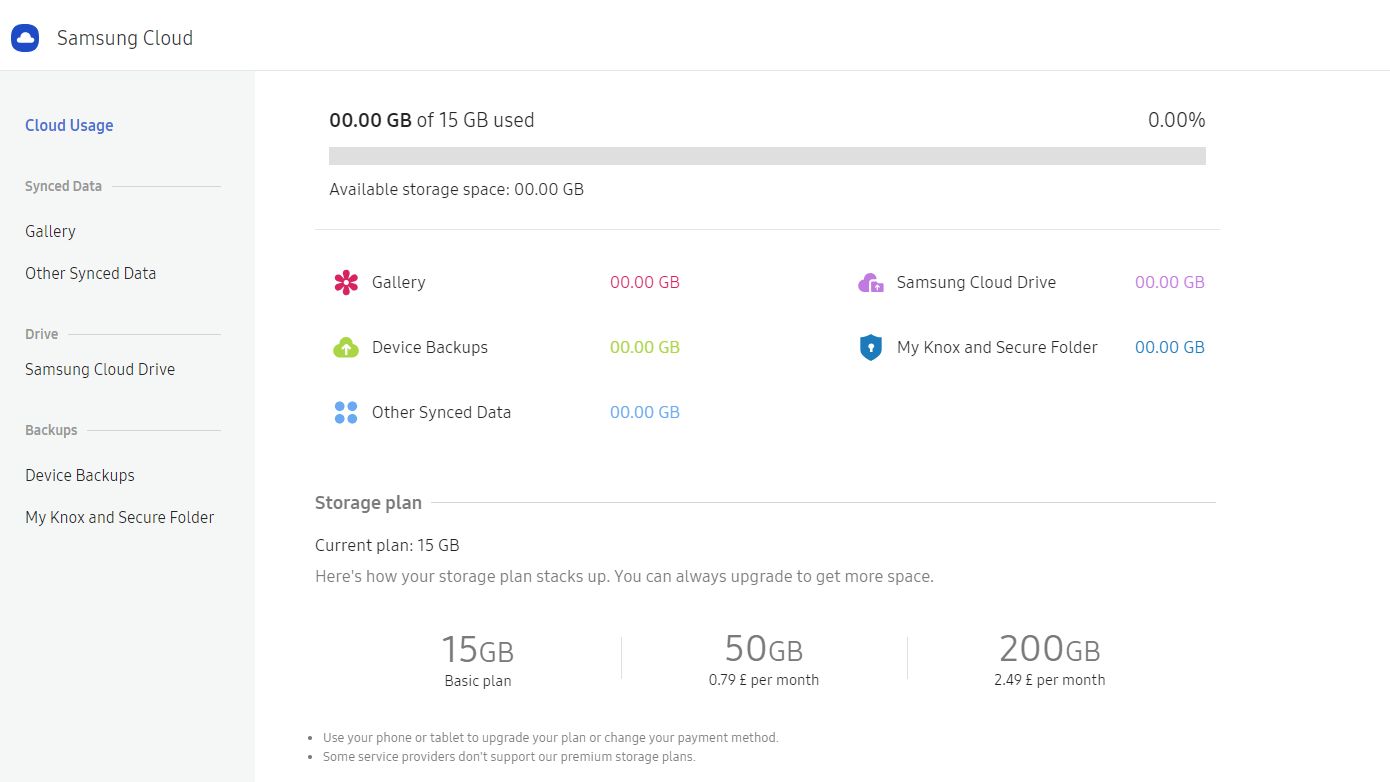Samsung Cloud storage: Everything you need to know
Updated: This service closed months ago

- Samsung Cloud Storage has ceased to exist although the product page is still up. The very last date for moving your content was November 30, 2021. After which all files in Gallery Sync and Drive storage for My files have been deleted without any chance of recovery. If you landed on this page to find out whether there's any chance of getting your files back, then I am afraid it is too late.
Looking for a replacement for Samsung Cloud storage?
$3.48 for a whole 12 months is what you will pay for the first year with our Editor's choice, IDRIVE. It is ridiculously cheap, not to mention that 10TB should go a very long way in covering your storage needs.
Own a Samsung Galaxy S20 smartphone? Then you probably already have access to Samsung’s free cloud storage solution: Samsung Cloud. As you might expect, this is a cloud-based solution that allows you to store files from your Samsung smartphone (or mobile device) remotely and much, much more.
More specifically on the servers handled by one of the lesser known Samsung divisions, Samsung SDS, which is present in more than 40 countries globally.
Note that Samsung has confirmed that the Gallery Sync and Drive storage for My Files will no longer be supported by Samsung Cloud from June 30 2021. If customers that have a premium storage subscription plan, this will automatically be canceled on April 1, 2021.
User data will be transferred to Microsoft OneDrive from October 2020. Those who have paid for extra capacity on Samsung Cloud Storage will get extra OneDrive storage capacity for one year after which, they will have to buy extra OneDrive storage capacity.
What is Samsung Cloud?
As the owner of a new Samsung device, you usually get 15GB of free cloud storage in Samsung Cloud – although Verizon customers are excluded from that deal.
You can back up your phone or keep any files that you want in this storage locker. Note that data generated by preloaded Samsung apps such as contacts and calendar as well as data associated with the device itself does not count against the 15GB quota.
Samsung splits the data that can be processed into two groups, as follows…
Are you a pro? Subscribe to our newsletter
Sign up to the TechRadar Pro newsletter to get all the top news, opinion, features and guidance your business needs to succeed!
What can be synced: Calendar, Contacts, Samsung Internet, Samsung Keyboard, S Notes, Samsung Notes, Samsung Pass, Gallery and Reminder.
What can be backed up: Calendar events, contacts on sim card and phone, call logs, clock settings, home screen layouts, apps, settings, messages, music, voice recordings and documents.
Unfortunately, neither WhatsApp messages nor photos are included in this process. There is also a 1GB file size limit; anything bigger won't be backed up.
How to save data in Samsung Cloud
To get started, go to cloud and accounts in your device settings, select Samsung Cloud and manage your data immediately. You can check your cloud usage, back up your data, restore it, and sync data across multiple devices except external storage (there’s no support for microSD cards). You will obviously need to create an account or sign in to the service.
Remember that the service is not available on older Samsung devices (older than the Galaxy S6), and that the account is not tied to the smartphone or tablet, but to your ID (or email address). You can access Samsung Cloud storage via a browser at support.samsungcloud.com but you won’t be able to add files – that can only be done via your (Android) phone or tablet.
Should I use Samsung Cloud?
If you need extra storage, Samsung charges $0.99 per month for 50GB and $2.99 per month for 200GB with no discounts given for annual subscriptions. Just remember that the option to upgrade is not available in all territories or on all carriers.
As of June 2019, the storage option was only available in 30 countries, and even then not all mobile networks rolled it out. In comparison, Google charges $1.99 per month for the 100GB tier and $7.99 for the 1TB tier on Google Drive.
Even this sounds expensive compared to our editor’s choice, the iDrive Personal which provides 5TB of storage for just over $3.50 when buying on an annual basis.
Given that Samsung’s top of the range smartphone, the Galaxy S20 Ultra , has up to 1TB internal storage and can accommodate another 1TB storage via a microSD card, it makes sense to choose a cloud storage locker capable of backing up that amount of data safely.
Other smartphone manufacturers like Huawei/Honor (with Mobile Cloud) or Apple (with iCloud) provide similar cloud-based offerings and all suffer from the same nagging issue – the lack of flexible storage upgrades across a wide range of operators and countries.
- We’ve picked out all the best cloud storage providers of 2020

Désiré has been musing and writing about technology during a career spanning four decades. He dabbled in website builders and web hosting when DHTML and frames were in vogue and started narrating about the impact of technology on society just before the start of the Y2K hysteria at the turn of the last millennium.
